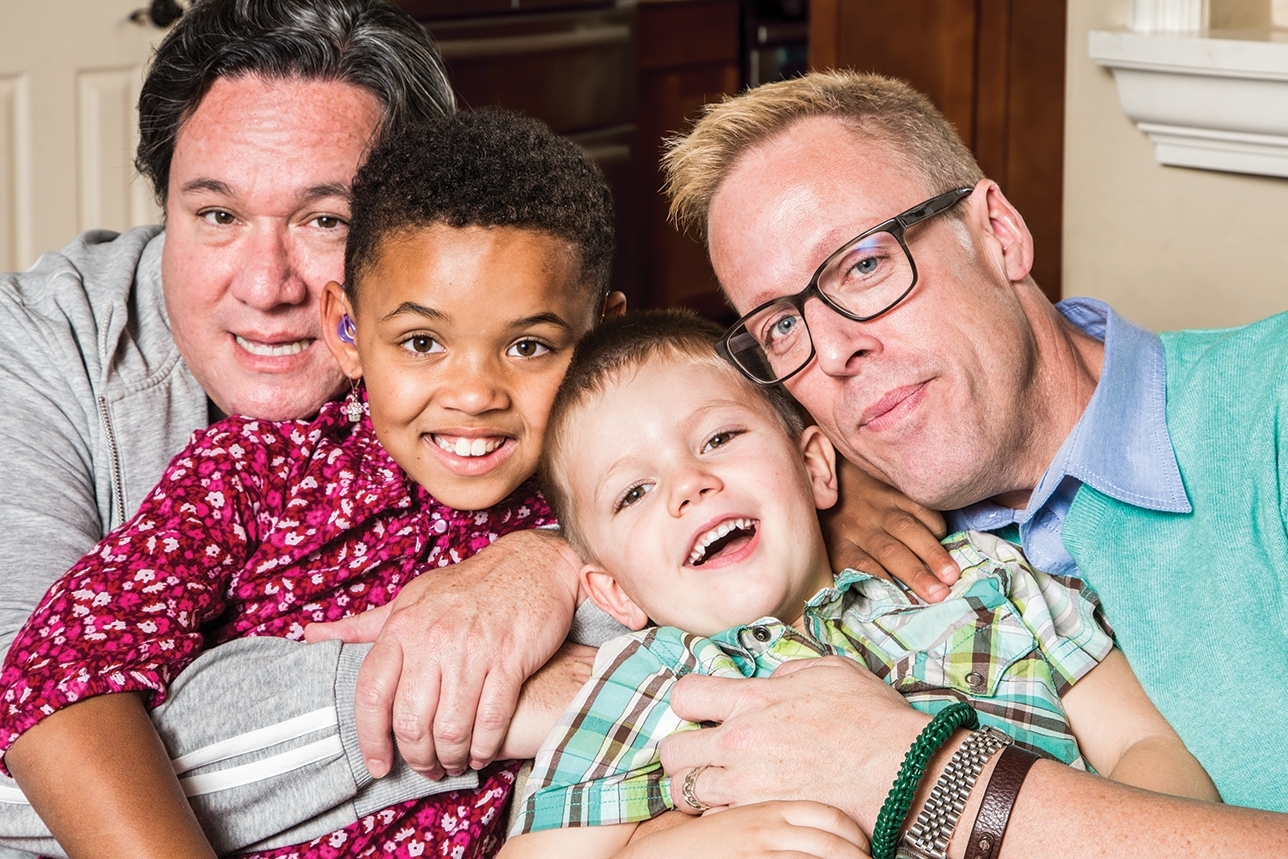
Our work
Positive Futures:
Children In and
Leaving Care
Introduction
We want young people to achieve their full potential in life. We want to focus in particular on young people leaving care, helping them achieve what they want.
Just under 100,000 children are looked after across England, Scotland, Wales and Northern Ireland.1
While each of the four nations collect information on children leaving care slightly differently, the latest data available shows that over 40,000 children leave the care system every year.
- England: 37,720 (as of 31 March 2017)
- Scotland: 5,653 (as of 31 July 2017)
- Wales: 495 (as of 31 March 2016)
- Northern Ireland: 582 (as of 31 March 2017)
Based on our years of experience working with children and young people in and leaving care we know they have a range of needs including:
- being involved in decisions about their care
- help with their physical or mental health
- consistency in relationships – particularly an adult they can trust
- help with transitioning to living on their own, including finding suitable accommodation
- support with entering and staying in education, employment and training
- support with parenting
Our report A Profile of Children referred to Barnardo’s fostering services in England2 showed that 16 per cent of children referred were experiencing issues related to sexual exploitation, 17 per cent of children referred were unaccompanied asylum seekers or had been trafficked, and 6 per cent of referrals indicated harmful sexual behaviour.
Neglected Minds: our report on mental health support for younger people leaving care
There are stark differences in the rates of mental ill-health among looked after children compared to their non-care experienced peers. Recently-issued guidance from the Department for Education and Department of Health recommends initial health assessments for all children entering care. However, despite this, evidence continues to suggest that assessment of the mental health needs of looked after children is patchy.
In 2017, we conducted a small scale study3 in some of our leaving care services in England and found that:
- 46% of the Barnardo’s care leaver cases which were reviewed as part of this research involved young people, who in the opinion of their personal adviser, had mental health needs
- a quarter of the case files involved a young person who had faced a mental health crisis since leaving care
- 65% of young people whom workers identified as having mental health needs were not currently receiving any statutory service.
Focus group discussions revealed that professionals often do not have sufficient understanding of mental health and how to support young people.
The mental health services which are available are also too inflexible to meet the specific needs of care leavers.4
Wider research on the needs of children in care suggests that they are more likely than their non-care experienced peers to have a diagnosable mental health condition Placement moves an breakdowns can negatively impact their sense of identity and self-esteem, and their experience of, and access to, education and health services.
While research suggests that the majority of children in care experience ‘overall’ positive outcomes, data indicates that care leavers are still less likely to be in education, employment or training, and more likely to be involved in the youth justice system, or experience homelessness and social isolation, than their non-care experienced peers.
In 2017-18, we supported 3,200 young people leaving care, and 7,900 children in care, across a range of services. Of the care leavers we supported, 2,200 were supported through our Leaving Care services.
Of our service users:
- 22% of looked after children and 26% of care leavers we supported were recorded as having a disability
- 26% of the female care leavers and 11% of the male care leavers we supported were young parents5
Rates of young people in education, employment and training
England: 88 per cent of all young people aged 18-20 were in EET6, compared to 50 per cent of those leaving care aged 19-217
Scotland: 91 per cent of all young people aged 16-19 were in EET8 compared to 28 per cent of those leaving care aged 19-219
Northern Ireland: Approximately 90 per cent of 16-24 year olds in Northern Ireland were in EET10 compared to 61 per cent of those leaving care aged 1911
Wales: 84 per cent of all young people aged 16-24 were in EET12, compared to 57 per cent of those leaving care aged 1913
Lives to be proud of: Support for care-experienced young people, Merthyr Tydfil
In Wales, we consulted with 19 young people aged 19-25, to gain their views on the how we can effectively support this age group14. The research focused on the role of Personal Advisers and Pathway Plans15 for 21-25 year olds, which the Welsh Government has agreed to provide for children leaving care up until the age of 25.
The findings show that the support available during this transition period needs to be tailored to each individual and is likely to change at different points in the journey. In order of importance, young people said they wanted help with:
- managing money
- housing
- filling in forms, and advice on where to go for more support
- finding a job.
In addition, support with making sure young people’s voices are heard; attending appointments with a young person; independent living skills; and emotional support were reported to be important.
Objectives
Our overall objectives for Children In and Leaving Care
Barnardo’s plans to transform the care journey so that outcomes for young people who have been in care are improved.
We recognise that many improvements can be made while children are still in care, which is why we are focusing on the whole journey rather than just at the stage of leaving care.
Our priority is to reduce the gap between the proportion of care-experienced and non-care experienced young people in EET (at 19-21 years old), as we believe this is an important imbalance to address and is symptomatic of the challenges children in and leaving care have to face compared to their peers. Doing this means making big changes, for example to the number and quality of opportunities available, and to the support available to children in and leaving care.
Our approaches
We have services throughout the UK supporting looked after children and young people and those leaving the care system. We also have a network of Independent Visitors who volunteer to be there as a constant support to children in care, and can help them get involved in activities they enjoy or just be there to listen in times of need.
Our support for children leaving care includes services such as advocacy; help with accommodation; mental health & wellbeing support; and employment, training and skills. We help care leavers make the transition from care to living on their own.
Improving the Care Journey
Supporting our foster carers16
As the majority of looked after children are in foster care, choosing suitable matches and supporting foster carers can be important components of achieving stable and successful placements for children in care.17
Our annual foster carer survey allows us to compare the experiences of Barnardo’s foster carers with the experiences of other foster carers, using the Fostering Network’s ‘State of the Nation’s Foster Care’ 2016 survey.18
As shown in Figure 7, Barnardo’s foster carers are consistently more positive about their service than the national average.
Figure 7: Foster carer satisfaction survey, 2017

Joel’s story
Barnardo’s gave me a place to find my feet and start to realise who I am. The staff respected me as a person and I didn’t feel like I was being punished anymore.
Joel
Read more
Improving Housing for Care Leavers
Young people in supported lodgings
Our supported lodgings services offer accommodation for young people leaving care or facing homelessness, in a number of areas across the UK. In supported lodgings placements, young people are encouraged to learn essential skills in a safe environment, to help them on their way to living independently.
Our staff use Triangle Consulting’s ‘Young Person’s Star’ to agree what level of need a young person may be at, across eight domains.19
Figure 8 shows the outcomes for young people in our supported lodgings services where two or more Star readings were recorded.
Most young people in our supported lodgings services need support because they were homeless/temporarily housed (51 per cent), are leaving care (40 per cent), or are refugee/seeking asylum (25 per cent).
Key findings:
- All 73 young people with two or more star readings recorded an improvement from first to last Star across all eight domains
- At the time of first Star reading, young people felt they needed the most help with ‘Money & rent’ and ‘Accommodation’ (average reading of 3.3 for each area). By the last Star recording, this had improved for both domains.
- Of the eight domains, the most noticeable average improvement was in ‘Practical life skills’, which saw a 30 per cent improvement from first to last Star reading (from 3.4 to 4.4)
Figure 8: Outcomes for young people in Barnardo’s supported lodgings services, 2017-18

Employment, training and skills (ETS) support for looked after children and care leavers
ETS Discovering Your Potential: Care Leaver Employability Programme in Scotland
In 2017-18, in Scotland, we piloted a unique programme of employability support for care experienced young people aged 16-29, to help them achieve positive destinations and close the attainment gap with their non-care experienced peers.
Working in partnership with Action for Children and the Prince's Trust, in 2017-18, we aimed to support 270 care experienced young people by providing:
- Up to a year of flexible, tailored, intensive support for 150 young people
- Prince's Trust Team programme for 120 young people seeking a personal development opportunity.
We also offered support to increase resilience, ensuring each young person was supported and developed in their journey towards sustained employment, education or training.
In 2017-18, we successfully engaged with a total of 316 young people between the Team programme and intensive support – the Team programme has reached 166 young people across 15 local authority areas.
Evidence shows that the majority of young people are sustaining participation, with those who drop out having the opportunity to re-join at a later stage, and we have successfully re-engaged with most of those young people who had previously dropped out. At the interim stage20 90 of the 316 young people had moved in to education, employment or training.
Professionals delivering the service are keen to highlight the positive impact that having a trusted professional has on the chances that young people coming through the programme participate, sustain, and achieve where they might otherwise have given up.
Influence
Influencing wider policy and practice
We promote the role that independent fostering agencies such as ourselves play in providing high quality placements for some of the most vulnerable children and young people. Our work has helped raise the importance of getting the correct placement for a child. The findings from our report on the profile of children referred to our fostering services have been used to contribute to recent debates about the future of fostering in England, including the Government’s independent review Foster Care in England and the Education Select committee’s report on the same subject.
The Scottish Government have prioritised supporting young people from groups of that are under-represented in employment and in accessing apprenticeships. This is enshrined in the Youth Employment strategy Developing the Young Workforce.21
We met regularly with government officials to look at possible solutions to supporting care-experienced young people into employment. The government were keen to explore a partnership approach, recognising that Barnardo’s, Prince's Trust and Action for Children were working closely through our programme ‘Discovering Your Potential’. We were able to demonstrate that we could deliver this partnership approach at scale and implement it quickly. As a result we gained approval to pilot our multi-agency approach in 2017-18. We have consequently secured funding for a second year to deliver the unique pilot to care-experienced young people, and will continue to advocate for system-wide changes to improve outcomes for these young people.
Wider learning about achieving Positive Futures
Employment, training and skills
Barnardo’s employment, training and skills (ETS) services also equip young people with the skills, confidence and ambition to find work and pursue a career.
ETS (Employment, Training & Skills) On Track Project in Basingstoke & Birmingham
Since 2016, we have partnered with Santander to transform the lives of unemployed young people across the UK, with a particular focus on those with learning difficulties, young people with mental health issues, and care leavers. Together, we established two On Track services in Basingstoke and Birmingham.
In 2017-18, we ran 16 flagship employability activities with local employers, and delivered over 600 hours of one-to-one coaching and group skills sessions. Employability activities included a four-week ‘Young Women in Business’ course in Birmingham, focusing on positive self-image, career and life goals, and interview skills techniques.
117 young people commenced the programme, with 100 progressing into a positive destination, of which 79 have stayed in their role for over 12 weeks.
We conducted an internal cost-benefit analysis of our On Track support, and found that for every £1 of investment, the benefit to the government and the wider economy is between £1.90 to £2.4022. This is likely to represent a significant underestimate given the assumptions and approach taken. The benefits pertain to young people getting and keeping a job, including volunteering roles.
Barnardo’s ETS services
Between 2013/14 and 2016/17 we have seen considerable growth in success rates across our Study Programme23, Apprenticeship24, and Employability Fund25 provision. In 2017-18, 375 young people commenced our Skills Development Scotland (SDS) Employability Fund provision. The job entry rate was 60 per cent.26
Figure 9: Barnardo’s ETS services, 2013/14 – 2016/17

Footnotes
- CoramBAAF (2017) Looked after children, adoption & fostering statistics. [Online] Available at https://corambaaf.org.uk/foste...
- Barnardo’s (2017) A profile of children referred to Barnardo’s fostering services in England. [Online] Available at http://www.barnardos.org.uk/resources/research_and... We analysed the characteristics of a sample of 1,482 children who were referred for foster placement (about 10 per cent of all the referrals we received in 2016), and did an in-depth analysis on 630 of them
- Barnardo’s (2017) Neglected Minds. Barnardo’s: Barkingside. Available online http://www.barnardos.org.uk/19...
- This review took place between October 2016 and March 2017 in a sample of our services in England. Semi-structured interviews with staff were conducted across five services, and case file analysis of 274 care leavers who were supported by Barnardo’s at the time of the study were drawn from two services (Derbyshire and Lincolnshire) which provide personal adviser support on behalf of the local authority. Personal advisers reviewed their current workload and provided data in answer to a number of questions
- Parental status was not known for a proportion of care leavers accessing our services
- ONS (2018) People aged 16 to 17, 18 to 20 and 21 to 24, not in education, employment or training (NEET) - JM18 [Online] Available at https://www.ons.gov.uk/employmentandlabourmarket/peoplein... Note this was an ad-hoc data request, as routinely published participation figures cover 16-18 year olds in England only, and quarterly NEET statistics cover 16-24 year olds. This ad-hoc requests presents the closest comparable age group
- Department for Education (2017) Children looked after in England (including adoption) year ending 31 March 2017. Table F1
- Skills Development Scotland (2017) Annual Participation Measure for 16 – 19 year olds in Scotland 2017 [Online] Available at https://www.skillsdevelopments...
- Scottish Government (2018) Children's Social Work Statistics 2016/17. Edinburgh: Scottish Government. Note this is a measure of those young people eligible for aftercare services. The economic activity of 16% was not known, and 26% were not receiving aftercare services
- NISRA (2018) Quarterly Supplement to the Labour Market Report January to March 2018. [Online] Available at https://www.nisra.gov.uk/sites/nisr... Based on the figure 10.2% of 16-24 year olds in Northern Ireland were NEET in this reporting period
- Department of Health NI (2018) Northern Ireland Care Leavers 2016/17. Belfast: Department of Health.
- StatsWales (2018) Participation of young people in education and the labour market: Year end 2016 and 2017 (provisional) [Online] Available at https://gov.wales/docs/statistics/2018/180... Based on 16.2% of 19-24 year olds NEET in 2017 (provisional)
- StatsWales (2016) Care leavers on their 19th birthday during year ending 31 March by local authority and activity [Online] Available at https://statswales.gov.wales/C...
- Barnardo’s Cymru (2018). “Lives to be proud of”. How to support young people from Merthyr Tydfil after they have left care when they are aged 21-25.’ [Manuscript unpublished]. 19 young people took part; 2 were 19 years old, the rest were over 21. 11 filled in an online survey and 8 participated in focus groups in Merthyr Tydfil
- A Personal Adviser helps ensure every young person gets the right level of support according to their needs. A Pathway Plan details the support a young person needs (following a proper assessment) which covers many aspects of the care leavers life from health and relationships to jobs and housing
- 14 foster carers completed the survey in December 2017, representing the views of 54 per cent of Barnardo’s foster carers
- Baginsky, M., Gorin, S. & Sands, C. (2017) The fostering system in England: an evidence review. King’s College London/ Quest Research and Evaluation Ltd. [Online] Available at: https://assets.publishing.service.gov.uk/government/uploads/syst...
- Lawson, K and Cann, R (2017). State of the Nation’s Foster Care 2016. What foster carers think and feel about fostering. The Fostering Network. [Online] Available online at https://www.thefosteringnetwor...
- These are measured on a scale from young people feeling ‘stuck’ – where they need lots of support and guidance, to ‘independent’, where they are confident and capable, and need little, if any, extra help
- As is a year-long programme, the final figures won’t be known until after 30th September 2018, however we are on track to achieve the target outcomes
- Scottish Government (2014) Developing the Young Workforce - Scotland's Youth Employment Strategy.[Online] Available online at https://www.gov.scot/Resource/...
- On Track Project, Annual Report 2017 [internal report]
- Study Programme is an alternative education programme for young people aged 16-19, most have left mainstream education with little or no qualifications and are not in education, employment or training (NEET). The programme provides work experience, maths and English and a vocational qualification. Positive destinations include a job, an apprenticeship, or further education
- Apprenticeships provide a real job with training for young people and are an ideal progression route from other ETS programmes
- Employability Fund supports young people in Scotland who are NEET and includes a work placement and a recognised accredited qualification - the certificate of work readiness. The outcome for the young person is a job or a Modern Apprenticeship
- Due to the nature of the contracts, data for the Employability Fund is available for 2017-18, but data for Study Programme and Apprenticeships for 2017-18 will only be available from January 2019




